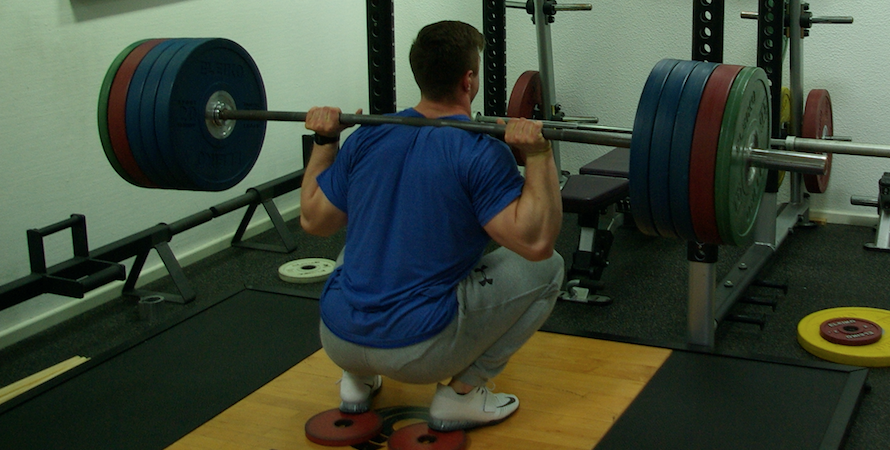"Maximum strength is the mother of all strength qualities" Prof. Dr. dr Schmidtbleicher
This is a well-known quote that briefly and concisely explains the physiological basis and the relationship between the individual qualities of strength. The basis of any strength training is the development of these strength qualities. While maximum strength is the basis of all strength qualities and thus the most crucial of all strength qualities, the others are of primary importance for different sports and goals.
Explosive power is the most important thing for a soccer player to cover running distances of 5 to 30 meters as quickly as possible. Starting power is important for a boxer to quickly accelerate his fists without allowing his opponent to react to them. Endurance is important for a rower so that his performance does not collapse at the end of a race. It is very important for a sprinter to improve his reactive power in order to reduce the ground contact times and to be faster at the finish line. And for a cyclist, it's critical to increase their relative strength so that they can pedal more watts without increasing their body weight.
The definition of the individual strength qualities is decisive for the optimal selection of the individual strength qualities for the optimization of the program design and thus for success in strength training. And these look like this:
maximum power
Maximum force is the greatest possible force that the neuromuscular system can voluntarily exert against resistance. In the context of strength training, maximum strength can be tested, for example, with compound exercises such as the LH squat, LH deadlift, LH bench press and also the pull-up. The decisive factor here is the maximum weight that can be moved for one repetition.
speed strength
Often referred to as speed strength, speed strength is the ability of the neuromuscular system to develop an impulse in the shortest possible time. Two forms of explosive power are explosive power and launch power.
explosive power
Explosive strength, also often referred to as power, is the ability of the neuromuscular system to develop high levels of strength in a short period of time. It is the ability to accelerate resistance. Whether it's your own body weight for sprints and jumps or a barbell for weightlifting exercises.
starting power
Starting power is the ability of the neuromuscular system to generate an impulse from rest or zero speed in the shortest possible time. It is the ability to develop strength at the beginning of a muscular contraction.
reactive force
Reactive force, also often referred to as plyometrics , is the force required to perform reactive movements. Reactive movements are characterized by the muscles working in rapid succession, yielding (eccentric) and then overcoming (concentric). Ground contact time is the best indicator of reactive power, especially for sprints and jumps. The lower the ground contact time, the higher the reactive power and vice versa. During the eccentric phase of reactive movements, the tendo-muscular system is able to store kinetic energy in the serial and parallel elastic structures. In the subsequent concentric phase, the stored energy can be released and there is an increase in strength and performance compared to a concentric contraction without previous eccentricity. The longer the stretch reduction cycle or the ground contact time, the more irrelevant the reactive force and the more relevant the explosive force. EMG measurements also made it clear that this increase in performance in the reactive strength area does not come about directly through the muscle, but primarily through the stretch reflex of the tendons and the connective tissue/fascia as well as neuromuscular coordination (1). Even if a high degree of this reactive force originates in the fascia and not directly in the muscle, a high degree of maximum strength is necessary to develop and release this force.
strength endurance
The muscular endurance is the fatigue resistance to long-lasting loads during static or dynamic muscle work. These are primarily sustained loads in the range of 60 to 120 seconds, such as an 800m sprint, rowing or 20 repetitions of squats. Continuous loads lasting more than 120 seconds are primary aerobic loads with lower resistance and are therefore less relevant from the point of view of "strength" endurance. Long-term exertion lasting less than 60 seconds is influenced less by the endurance component, ie the resistance to fatigue, and more by the strength component.
absolute power
The absolute force corresponds to the maximum force that the neuromuscular system can exert at most against a resistance. The absolute strength is made up of the arbitrary maximum strength and the so-called autonomously protected performance/strength reserves. The arbitrary maximum force corresponds to up to 70% of the maximum force. The remaining power reserve can only be released and used in a few cases, such as through stimulants, psychological factors (primarily extreme stress) and electrical muscle stimulation (EMS for short). Studies show that strong electrical stimulation of the innervating nerve can increase the voluntary maximum strength by 30% to 40% (Schmidtbleicher et al. 1978).
relative force
Relative strength is the ratio of maximum strength to body weight. It is important when strength versus body weight is decisive in athletic movements. A person with a 1RM when squatting 120kg with a body weight of 60kg has a lower maximum strength but higher relative strength than a person with a 1RM when squatting 150kg with a body weight of 80kg. This is particularly important in sports with weight classes and sports with long, continuous periods of exertion such as cycling and middle/long distance racing.
Each of the strength qualities and their development is critical at a specific point in time for a particular athlete/exerciser.
On March 16th, the "YPSI Strength Training & Sports Science Seminar with Prof. Dr. dr Dietmar Schmidtbleicher" instead, more information and registration directly here
Reference:
(1) Arnd Krüger: Plyometrics on an inclined plane. In: competitive sports. 5, 2012, p. 33.
Image: The squat is an excellent indicator of a trainee's maximum strength.

